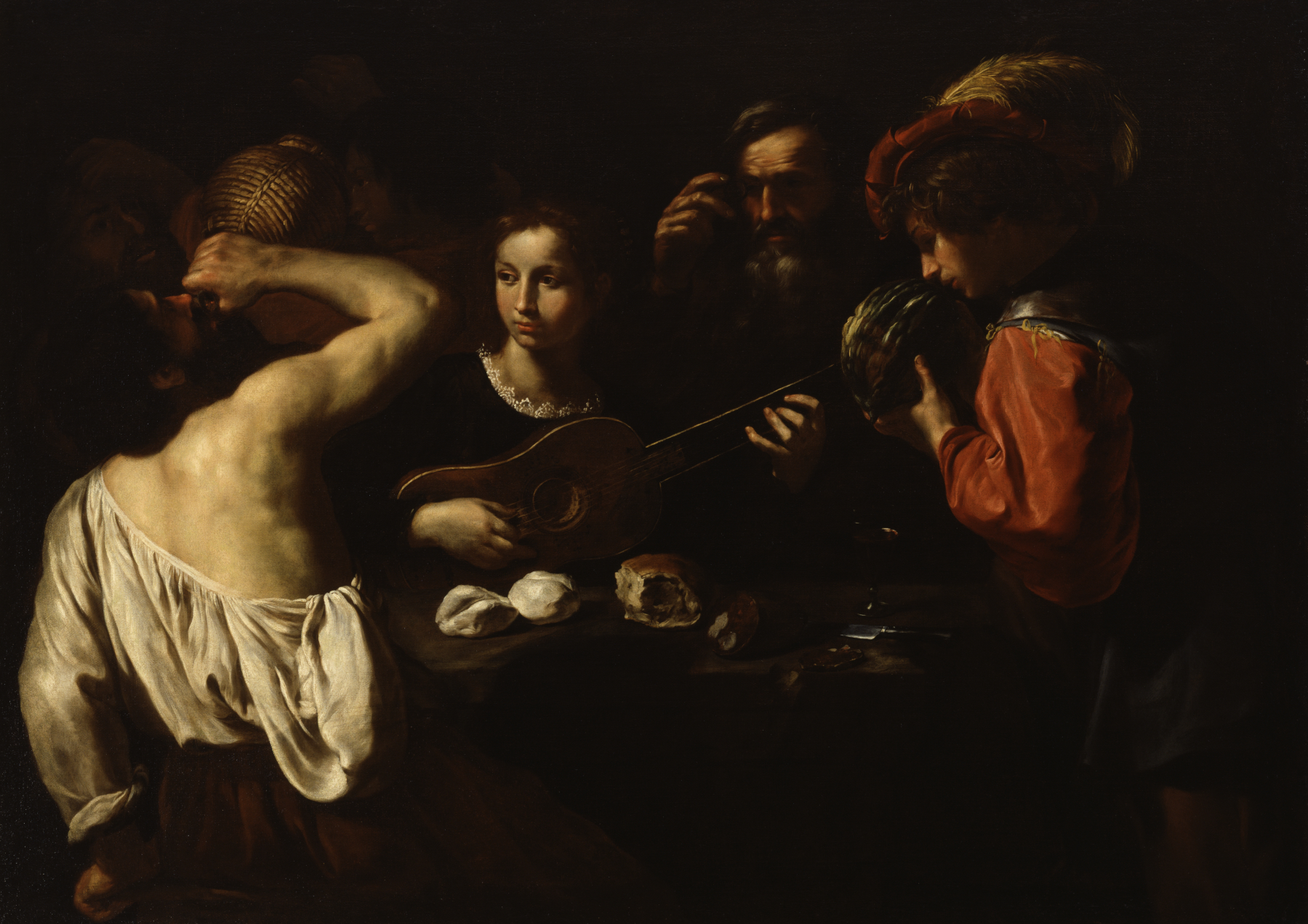art.thewalters.org/detail/15244
Preview meta tags from the art.thewalters.org website.
Linked Hostnames
9- 32 links tothewalters.org
- 12 links toart.thewalters.org
- 2 links totwitter.com
- 2 links towww.facebook.com
- 1 link to2368a.blackbaudhosting.com
- 1 link tocreativecommons.org
- 1 link togoo.gl
- 1 link tostore.thewalters.org
Thumbnail

Search Engine Appearance
Allegory of the Five Senses | The Walters Art Museum
At first glace, this is simply a scene in a darkened inn frequented by the poor and down-and-out. Embedding a classical allegory (a symbolic image) in such a subject makes it especially intriguing. Each person acts out one of the five senses: sound is represented by the woman with a lute, at center; taste, by the man emptying a flask of wine; smell, by the young man with a melon; sight, by the man on the right holding a pair of spectacles; and touch, by the two people who are fighting. Paolini's allegory dates from his early years in Rome, where he studied the paintings of Caravaggio (1571-1610), known for their realism and strong chiaroscuro (modeling in light and shade).
Bing
Allegory of the Five Senses | The Walters Art Museum
At first glace, this is simply a scene in a darkened inn frequented by the poor and down-and-out. Embedding a classical allegory (a symbolic image) in such a subject makes it especially intriguing. Each person acts out one of the five senses: sound is represented by the woman with a lute, at center; taste, by the man emptying a flask of wine; smell, by the young man with a melon; sight, by the man on the right holding a pair of spectacles; and touch, by the two people who are fighting. Paolini's allegory dates from his early years in Rome, where he studied the paintings of Caravaggio (1571-1610), known for their realism and strong chiaroscuro (modeling in light and shade).
DuckDuckGo
Allegory of the Five Senses | The Walters Art Museum
At first glace, this is simply a scene in a darkened inn frequented by the poor and down-and-out. Embedding a classical allegory (a symbolic image) in such a subject makes it especially intriguing. Each person acts out one of the five senses: sound is represented by the woman with a lute, at center; taste, by the man emptying a flask of wine; smell, by the young man with a melon; sight, by the man on the right holding a pair of spectacles; and touch, by the two people who are fighting. Paolini's allegory dates from his early years in Rome, where he studied the paintings of Caravaggio (1571-1610), known for their realism and strong chiaroscuro (modeling in light and shade).
General Meta Tags
6- titleAllegory of the Five Senses | The Walters Art Museum
- charsetutf-8
- viewportwidth=device-width, initial-scale=1.0
- robotsindex, follow, max-image-preview:large, max-snippet:-1, max-video-preview:-1
- article:publisherhttps://www.facebook.com/thewaltersartmuseum/
Open Graph Meta Tags
10og:locale
en_US- og:typearticle
- og:titleAllegory of the Five Senses | The Walters Art Museum
- og:descriptionAt first glace, this is simply a scene in a darkened inn frequented by the poor and down-and-out. Embedding a classical allegory (a symbolic image) in such a subject makes it especially intriguing. Each person acts out one of the five senses: sound is represented by the woman with a lute, at center; taste, by the man emptying a flask of wine; smell, by the young man with a melon; sight, by the man on the right holding a pair of spectacles; and touch, by the two people who are fighting. Paolini's allegory dates from his early years in Rome, where he studied the paintings of Caravaggio (1571-1610), known for their realism and strong chiaroscuro (modeling in light and shade).
- og:urlhttps://art.thewalters.org/detail/15244/allegory-of-the-five-senses/
Twitter Meta Tags
4- twitter:cardsummary_large_image
- twitter:titleAllegory of the Five Senses | The Walters Art Museum
- twitter:descriptionAt first glace, this is simply a scene in a darkened inn frequented by the poor and down-and-out. Embedding a classical allegory (a symbolic image) in such a subject makes it especially intriguing. Each person acts out one of the five senses: sound is represented by the woman with a lute, at center; taste, by the man emptying a flask of wine; smell, by the young man with a melon; sight, by the man on the right holding a pair of spectacles; and touch, by the two people who are fighting. Paolini's allegory dates from his early years in Rome, where he studied the paintings of Caravaggio (1571-1610), known for their realism and strong chiaroscuro (modeling in light and shade).
- twitter:site@walters_museum
Link Tags
15- alternatehttps://art.thewalters.org/feed/
- alternatehttps://thewalters.org/feed/?post_type=news
- alternatehttps://journal.thewalters.org/feed/
- canonicalhttps://art.thewalters.org/detail/15244/allegory-of-the-five-senses/
- dns-prefetch//unpkg.com
Links
53- https://2368a.blackbaudhosting.com/2368a/Make-a-Gift
- https://art.thewalters.org
- https://art.thewalters.org/browse/category
- https://art.thewalters.org/browse/category/baroque-europe
- https://art.thewalters.org/browse/creator